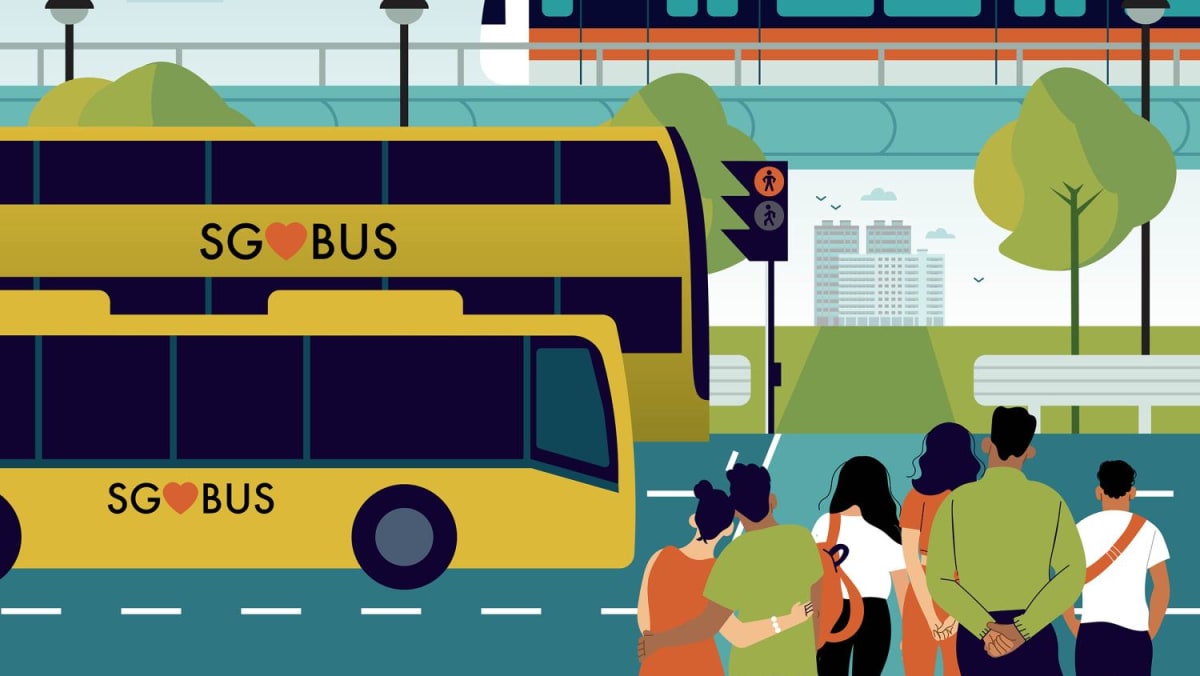
Each week, TODAY’s long-running Big Read series delves into the trends and issues that matter. This week, we look at the role of buses and their appeal to commuters as Singapore’s public transport system develops. This is a shortened version of the full feature, which can be found here.
 By
By
Deborah Lau
Regular bus commuter Lam K L told TODAY that given the choice, he would usually opt to take the bus over the MRT.
“The train network is extensive, but sometimes it may take two or three train changes to reach your desired stop. So if there’s a direct bus, then of course, I will take the direct bus,” said the 38-year-old, who works in the technology sector.
Mr Lam, who has an 11-month-old daughter, added that it is generally easier to get a seat on the bus, as well as bring his child’s stroller onboard.
“For the train, when you push the pram, you cannot push it up the escalator. You have to wait for the lift (and) able-bodied people will also take the lift.”
Given the continuing appeal of buses despite the proliferation of the MRT lines, it was perhaps not surprising that the Land Transport Authority’s (LTA) announcement on Nov 17 that it would withdraw bus service 167, due to a decrease in its ridership, triggered an outcry from commuters.
The authority later reversed its decision on Nov 28, saying in a Facebook post that it would retain the bus service “for now” and instead operate it at 30-minute intervals throughout the day.
Still, such incidents of bus service rationalisation — where services are withdrawn, merged or have their operating frequency or hours reduced due to low commuter demand — are not new.
In its annual report for 2021/2022, LTA noted that bus rationalisation is “an inevitable process” as the country grows its land transport system. According to the authority’s website, there are currently more than 300 bus services plying the island.
Transport analysts told TODAY that the opening of new MRT lines could lead to a shift in commuters’ travel and usage patterns – with some riders opting to shift their commute from bus to MRT.
Some degree of rationalisation would hence be necessary to prevent duplication and to not waste resources, they added.
WHY IT MATTERS
Yet, while the public may understand that this needs to be done, Members of Parliament (MPs) and bus commuters interviewed by TODAY said that the impact and inconvenience of such rationalisation ought to be minimised.
This could be done through a gradual phasing out of the bus service as opposed to a complete withdrawal following a notice period, or having the authorities consult affected commuters on the proposed changes, prior to finalising and implementing them, they added.
While rationalisation is unavoidable, how changes to bus services are implemented and conveyed to the public are key to how they are received, said transport analysts, MPs and commuters.
THE BIG PICTURE
Singapore adopts a hub-and-spoke model for its public transport network, relying on buses or Light Rapid Transit to serve as feeder services, bringing commuters to MRT stations or bus interchanges.
Under this model, the rail network would remain as the “backbone” of the country’s public transport system, given its higher speed and capacity.
In deciding which bus services should be rationalised, Mr Menon said a main factor could be the number of passengers that the service carries per day.
“It may not be desirable to get all (these) bus passengers on the MRT, which is crowded during the peak periods,” he said.
Additionally, the availability of such duplicated popular bus routes could also prove useful in the event of an MRT breakdown.
Ultimately, “reasonable choices should always be given in any public service” including public transport, said Mr Menon.
For SUSS’ Assoc Prof Theseira, a guiding principle in planning the public transport network lies in balancing the cost of its operations with the service quality offered to the public.
“You want to try to provide good services to as many commuters as possible, but you eventually run into routes which are relatively expensive to operate, and which only make a small difference in service quality, for a small number of commuters,” he said.
“These are the routes which are prioritised for service rationalisation. Now, these routes might be very, very important for those commuters. But from the system perspective, they end up costing a lot and deliver relatively little on the margin.”
In Singapore’s case, what the authorities are also gradually working towards is “redundancy in terms of the high capacity MRT system, rather than redundancy in the form of bus services that parallel the MRT lines,” said Assoc Prof Theseira.
For example, the growth in new MRT lines mean commuters in the north now have two ways of reaching town by MRT — via the North-South and Thomson-East Coast lines — and can use one if the other is down, he added.
“The reason (for building redundancy through the MRT network) is that the MRT system is far better positioned to accommodate the commuter volumes resulting from one line being disrupted, than the bus system is,” he said.
All things considered, how the changes are communicated to commuters before implementation is crucial.
Dr Ong believes that grassroot and community outreach would be “very important”, as buses cater to a “huge demographic spread”. This includes retired seniors whose main commute mode may be the bus, as they travel within the town and do not make regular long-distance travel.
“(For) our elderly in such a demographic… it is generally acknowledged that they are not the sort to go online, read emails…They will actually watch television or news, but they may not even catch the news,” he said.